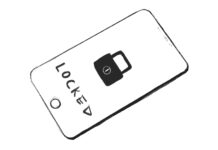By David Trilling
Published on Journalist’s Resource
Dec 15, 2016
There are almost 1.3 million lesbian, gay, and bisexual (LGB) high school students in the United States, according to the first nationwide survey measuring their numbers and attitudes toward risk. These students – about 8 percent of the total – are nearly five times more likely than their straight peers to have attempted suicide and more than four times more likely to have experimented with hard drugs like heroin and meth.
Another half a million high school students are not sure about their sexual orientation, according to the study by the U.S. Centers for Disease Control and Prevention (CDC). Several of the study’s authors flagged the survey in JAMA, the journal of the American Medical Association. They used a nationally representative sample of 15,624 public and private high school students in grades nine through 12 who completed an anonymous and voluntary questionnaire. According to their write-up in JAMA:
“Compared with their straight peers, LGB students reported a significantly higher prevalence of being bullied at school (34.2 percent vs 18.8 percent), experiencing electronic bullying (28.0 percent vs 14.2 percent), being forced to have sexual intercourse (17.8 percent vs 5.4 percent), experiencing physical dating violence (17.5 percent vs 8.3 percent), and experiencing sexual dating violence (22.7 percent vs 9.1 percent). Students who were not sure of their sexual identity also reported higher rates of all of these behaviors than their straight peers.”
Nationwide, the CDC found, “88.8 percent of students identified as heterosexual, 2.0 percent identified as gay or lesbian, 6.0 percent identified as bisexual, and 3.2 percent were not sure of their sexual identity.” The survey was conducted between September 2014 and December 2015 and measured 118 risky behaviors in total, such as whether students catch rides with drivers who have been drinking (over 20 percent of all students report they had done so at least once over the previous 30 days).
Of students who had driven a car in the previous 30 days, those unsure about their sexual identity are twice as likely to report having driven under the influence of alcohol (16.7 percent).
Gay, lesbian and bisexual students are more likely to engage in many of the risky behaviors the CDC measured. Though they are less likely than straight students to carry a firearm in public, they are more likely to carry a weapon to school (6.2 percent) and twice as likely to have tried marijuana before age 13 (13.9 percent). They are also more than twice as likely to skip school out of safety concerns (12.5 percent) and almost twice as likely to have been threatened with a weapon at school (10 percent).
Reference: https://journalistsresource.org/studies/society/public-health/gay-lesbian-lgbt-teens-risky-behavior/
Comment: Learning LGBTQ at school age would help those who’re uncertain about their sex orientation and reduce possible physical and psychological violences towards LGBTQ groups. The fact that LGBTQ students are more likely to engage in risky behaviors indicates they are going through more stress and struggles probably because of the lack of understanding. However, when LGBTQ has not be nationally accepted, what kind of sex education would be acceptable?





Hi Sherry, I think your comment and the article certainly show us how unfair the LGBTQ community is treated. It also notes how the LGBTQ student community is vastly outnumbered by the hetero student community. I think this speaks to a larger lesson teens should learn about not treating people differently based on differences. I would be interested to see if these statistics are similar in other minority groups.
Hi Sherry, to address the question you posed, I think it would be interesting to see how sex education focused on empathy and relationships would impact LGBTQ+ communities. Especially in areas where LGBTQ+ may not be as accepted, I wonder if a focus on empathy in healthy relationships would translate to greater empathy for those who love differently than you.